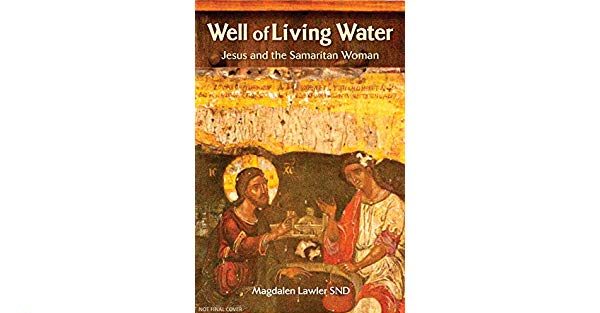Well of Living Water: Jesus and the Samaritan Woman
by Magdalen Lawler SND (Messenger Publications, €10.95)
Connecting Lives: Interbelief Dialogue in Contemporary Ireland
by Patricia Kiernan (Veritas, €17.99)
The Samaritan woman at the well is a familiar figure, even to those whose memories of the gospels have grown dim. As Sister Lawler points out in her book, the dialogue between the Samaritan and Jesus, which is found in John 4:1-42, is the longest dialogue with Jesus in the Gospels.
This is not just an indication of the emphasis that the Gospels themselves lay on the nature and role of women – a message all too often forgotten by many in the modern world.
The dialogue is important not because the Samaritan was a women, but because she represents in herself all the outcasts of the world. It has become all too easy these days to dismiss the claims of refugees, or those other “displaced” persons in the world, for whom, when we were at school, we would offer up our prayers.
In the Middle East, far more than in our own society, a well is seen as a source of life itself, hence the idea of the water of life”
She is a Samaritan, but many are vague about what this means. Trying to understand it we should think of a Romanian, or an African, hoping to find in our country a new life and a new beginning.
The history of the Samaritans is complicated and controversial. But it can be said that they have always claimed to represent the original form of the religion of the patriarch Joseph.
But they were disdained by the Jews returning from Babylon, and later by others, as heretics. Today they are represented by a tiny community of perhaps 850, divided between their ancient place of worship at Mount Gerizim, where they have their temple, and a city near Tel-Aviv.
Positive image
In the time of Jesus, which is what is relevant to a reading of the passage by the author of John, they were regarded as a species of outcast by Orthodox Jews. Yet in the Gospels, significantly, they are given a deeply positive image.
For Jesus as a recognised rabbi to approach her was thus a very significant fact. To embrace the person, he had to ignore the prejudices and customs of his own people.
All this aside, Sr Lawler’s text is built up around an antique Greek icon of the dialogue between Jesus and the Samaritan women, which was a gift to the Jesuit order. (Once in Heythrop College, it is now preserved in a private collection by the British Province of the Society of Jesus). She uses this to focus her thoughts and to suggest a prayerful approach, drawing on Ignatian spirituality, to the themes that at arise from contemplating its image.
Water of life
In the Middle East, far more than in our own society, a well is seen as a source of life itself, hence the idea of the water of life. Water is not something static; it flows and can be shared, it refreshes and sustains.
This book avoids complicated matters pertaining to history, and fills out a set of ideas relevant to life today. Sr Lawler is suggesting that her readers can, through the icon and the Gospel verses, open up their own dialogue with Jesus.
Behind that there has always to be the notion that no one in the world should be outcast. There is room, and love, for all.
Relevant to this notion, in the collation of essays by some 20 writers which she has edited, Patricia Kieran throws into relief the same kind of dialogue, but in a form that affects modern Irish society today.
The contributors deal not only with the historical divisions that go back centuries in Ireland, but also with issues arising from the arrival in Ireland of followers of a diverse number of faiths and philosophies.
Many will gain important insights from these essays which may become increasingly relevant in a rapidly changing country, not only in the urban areas but also in country towns.
Behind all that must also linger a recollection of the meaning of the Samaritan woman.


 Peter Costello
Peter Costello Photo: Amazon.UK
Photo: Amazon.UK 